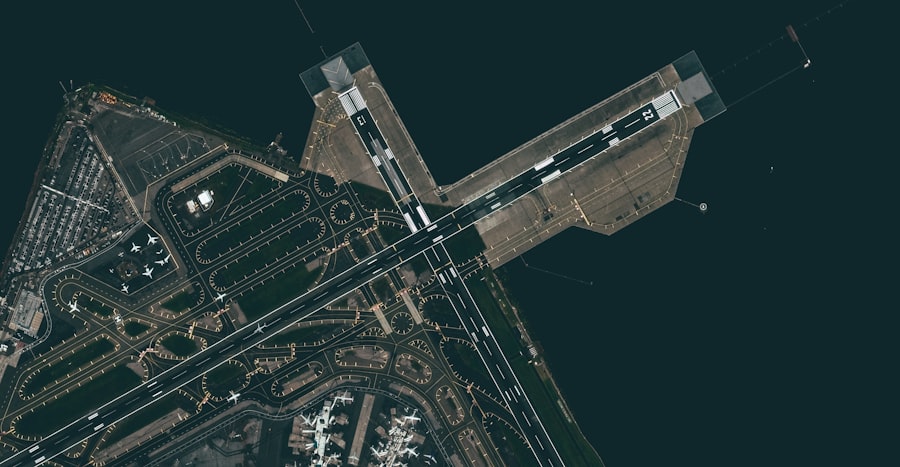Gray zone tactics represent a complex and evolving landscape of conflict that exists between traditional warfare and peaceful diplomacy. These tactics are characterized by ambiguity, deniability, and a blend of military and non-military strategies aimed at achieving political objectives without crossing the threshold into open warfare. Nations employing gray zone tactics often exploit vulnerabilities in their adversaries, using a combination of cyber operations, economic pressure, disinformation campaigns, and other unconventional methods to achieve their goals.
This approach complicates the response of targeted nations, as the actions taken may not fit neatly into established frameworks for conflict resolution or military engagement. The rise of gray zone tactics has significant implications for global security, particularly for organizations like NATO. As member states face increasingly sophisticated threats that blur the lines between war and peace, understanding and countering these tactics becomes paramount.
The challenge lies not only in recognizing the signs of gray zone activities but also in developing effective strategies to mitigate their impact on national and collective security. This article will explore various dimensions of gray zone tactics, focusing on NATO’s infrastructure and the multifaceted threats it faces in this new era of conflict.
Key Takeaways
- Gray zone tactics are unconventional methods used by state and non-state actors to achieve strategic objectives without triggering a traditional military response.
- NATO’s infrastructure includes critical assets such as energy and communication networks, which are vulnerable to cyber attacks and economic coercion.
- Cyber attacks on critical infrastructure can disrupt essential services and pose a significant threat to national security and economic stability.
- Economic coercion and political influence are used to manipulate and control countries, undermining their sovereignty and security.
- Disinformation campaigns and propaganda are employed to sow discord, manipulate public opinion, and undermine trust in democratic institutions.
Understanding NATO’s Infrastructure
NATO’s infrastructure is a critical component of its operational capabilities, encompassing a vast network of military bases, communication systems, and logistical support structures. This infrastructure is designed to facilitate rapid response to threats and ensure the readiness of member states to engage in collective defense. However, the very complexity and interconnectivity of NATO’s infrastructure also render it vulnerable to gray zone tactics.
Adversaries can exploit weaknesses in this network to disrupt operations, sow discord among member states, or undermine public confidence in NATO’s effectiveness. The importance of NATO’s infrastructure extends beyond mere physical assets; it also includes the technological frameworks that support communication and coordination among member nations. As adversaries increasingly turn to cyber capabilities as a means of warfare, the integrity of these systems becomes paramount.
A successful attack on NATO’s infrastructure could not only hinder military operations but also create a ripple effect that impacts political cohesion among member states. Understanding the vulnerabilities inherent in this infrastructure is essential for developing robust defense strategies against gray zone tactics.
Cyber Attacks on Critical Infrastructure

Cyber attacks have emerged as one of the most prominent tools in the arsenal of gray zone tactics. These attacks target critical infrastructure—such as power grids, transportation systems, and financial networks—aiming to disrupt normal operations and instill fear among the populace. The anonymity afforded by cyberspace allows adversaries to strike without immediate attribution, complicating the response for affected nations.
For NATO, the threat posed by cyber attacks is particularly concerning, as member states rely heavily on interconnected systems for both civilian and military functions. The consequences of cyber attacks on critical infrastructure can be devastating. A successful breach can lead to widespread outages, economic instability, and even loss of life.
For instance, attacks on power grids can plunge entire regions into darkness, affecting hospitals, emergency services, and everyday life. Moreover, such incidents can erode public trust in government institutions and create a sense of vulnerability among citizens. As NATO continues to navigate the complexities of gray zone tactics, addressing the threat of cyber attacks on critical infrastructure remains a top priority.
Economic Coercion and Political Influence
| Country | Economic Coercion | Political Influence |
|---|---|---|
| China | High | High |
| Russia | Medium | High |
| United States | Low | High |
Economic coercion is another facet of gray zone tactics that has gained prominence in recent years. Nations may leverage their economic power to exert influence over other countries, using tools such as sanctions, trade restrictions, or investment manipulation to achieve political objectives. This form of coercion can destabilize economies and create divisions within alliances like NATO, as member states may find themselves at odds over how to respond to external pressures.
For example, when a nation imposes sanctions on a NATO ally, it may create rifts within the alliance as member states grapple with competing interests. Additionally, adversaries may use economic incentives to sway public opinion or influence political decisions in targeted countries.
As NATO confronts these challenges, it must develop strategies to counter economic coercion while maintaining unity among its members.
Disinformation Campaigns and Propaganda
Disinformation campaigns have become a hallmark of gray zone tactics, with adversaries employing sophisticated strategies to manipulate information and shape narratives. These campaigns often aim to sow discord among populations, undermine trust in institutions, and create confusion regarding the intentions of governments. In an age where information spreads rapidly through social media and digital platforms, the potential for disinformation to influence public opinion is greater than ever.
NATO member states are not immune to the effects of disinformation campaigns. Adversaries may target specific countries with tailored narratives designed to exploit existing divisions or amplify societal tensions. The consequences can be far-reaching, leading to polarization within societies and eroding trust in democratic processes.
To counter these threats, NATO must prioritize information integrity and develop robust strategies for identifying and addressing disinformation campaigns before they can take root.
Targeting Energy and Communication Networks

Energy and communication networks are critical components of modern society that are increasingly targeted by gray zone tactics.
Adversaries may seek to exploit vulnerabilities in energy infrastructure—such as power plants or pipelines—to create chaos or exert leverage over nations dependent on these resources.
Communication networks are equally vulnerable; attacks on telecommunications systems can disrupt not only civilian life but also military operations. The ability to communicate effectively is essential for coordinated responses during crises, making these networks prime targets for adversaries seeking to undermine NATO’s collective defense capabilities. As such, safeguarding energy and communication networks is vital for ensuring resilience against gray zone tactics.
Hybrid Warfare and Unconventional Tactics
Hybrid warfare represents a blend of conventional military force with irregular tactics such as cyber operations, disinformation campaigns, and economic coercion. This multifaceted approach allows adversaries to exploit weaknesses across various domains while maintaining plausible deniability regarding their actions. For NATO, hybrid warfare poses unique challenges as it requires a comprehensive understanding of both military and non-military strategies.
The unpredictable nature of hybrid warfare complicates traditional defense planning. Adversaries may engage in a series of low-intensity actions designed to wear down an opponent’s resolve over time rather than launching a full-scale invasion. This gradual approach can create confusion regarding the appropriate response, as targeted nations may struggle to determine whether they are facing an act of war or a series of provocations.
To effectively counter hybrid warfare tactics, NATO must adopt a holistic approach that integrates military readiness with diplomatic efforts and public awareness campaigns.
Response and Resilience Strategies
In light of the diverse threats posed by gray zone tactics, NATO must develop comprehensive response and resilience strategies that encompass all member states. These strategies should prioritize collaboration among nations while fostering a culture of preparedness at both governmental and societal levels. By enhancing situational awareness and sharing intelligence regarding potential threats, NATO can better equip its members to respond effectively to gray zone challenges.
Resilience strategies should also focus on strengthening critical infrastructure against potential attacks. This includes investing in cybersecurity measures for both military and civilian systems while promoting public-private partnerships that enhance overall security posture. Additionally, fostering public awareness about gray zone tactics can empower citizens to recognize disinformation campaigns or economic coercion attempts, thereby bolstering societal resilience against these threats.
Strengthening NATO’s Cyber Defense
Given the increasing prevalence of cyber attacks as a tool of gray zone tactics, strengthening NATO’s cyber defense capabilities is essential for safeguarding member states’ interests. This involves not only enhancing technical defenses but also fostering collaboration among nations to share best practices and intelligence regarding emerging threats. By creating a unified approach to cybersecurity within NATO, member states can better protect their critical infrastructure from potential breaches.
Investing in advanced technologies such as artificial intelligence and machine learning can also enhance NATO’s cyber defense capabilities by enabling faster detection and response to cyber incidents. Furthermore, conducting regular training exercises focused on cyber scenarios can help prepare member states for potential attacks while fostering interoperability among national cyber defense teams. As adversaries continue to evolve their tactics in cyberspace, NATO must remain vigilant and proactive in its efforts to strengthen its cyber defenses.
International Cooperation and Information Sharing
International cooperation is vital for effectively countering gray zone tactics that transcend national borders. By fostering collaboration among allies and partners outside NATO, member states can enhance their collective security posture against shared threats. Information sharing plays a crucial role in this process; by exchanging intelligence regarding emerging threats or disinformation campaigns, nations can develop more effective responses tailored to specific challenges.
Establishing formal mechanisms for information sharing can facilitate timely communication among nations facing similar threats. Joint exercises focused on gray zone scenarios can also promote interoperability while building trust among allies. As adversaries continue to exploit vulnerabilities across borders, international cooperation will be essential for developing comprehensive strategies that address the multifaceted nature of gray zone tactics.
Countering Gray Zone Tactics and Protecting Infrastructure
In conclusion, countering gray zone tactics requires a multifaceted approach that encompasses military readiness, diplomatic engagement, economic resilience, and public awareness initiatives. As NATO navigates this complex landscape of conflict, understanding the diverse threats posed by gray zone tactics is essential for protecting critical infrastructure and ensuring collective security among member states. By prioritizing collaboration both within NATO and with international partners, nations can enhance their ability to respond effectively to emerging challenges.
Ultimately, resilience against gray zone tactics hinges on proactive measures that strengthen critical infrastructure while fostering societal awareness about potential threats. By investing in cybersecurity capabilities and promoting information sharing among allies, NATO can better equip its members to face the evolving landscape of conflict in the 21st century. As adversaries continue to adapt their strategies in pursuit of political objectives without resorting to traditional warfare, the importance of countering gray zone tactics will only grow in significance for global security.
In recent years, the concept of “gray zone” tactics has become increasingly relevant, particularly in the context of threats against NATO infrastructure. These tactics, which fall between traditional warfare and peacetime competition, often involve cyber attacks, disinformation campaigns, and other forms of hybrid warfare. An insightful article discussing these challenges can be found on In The War Room. This piece delves into the complexities of gray zone strategies and their implications for NATO, highlighting the need for adaptive and resilient defense mechanisms to counter such unconventional threats.
WATCH THIS! The FSB’s Hidden War on Europe’s Pipelines
FAQs
What are gray zone tactics?
Gray zone tactics are actions taken by a state or non-state actor to achieve strategic objectives while remaining below the threshold of conventional military conflict. These tactics often involve the use of unconventional methods such as cyber attacks, disinformation campaigns, economic coercion, and proxy warfare.
What is NATO infrastructure?
NATO infrastructure refers to the physical and logistical assets, including military bases, communication networks, and transportation routes, that are used to support the operations and activities of the North Atlantic Treaty Organization (NATO) member countries.
What are some examples of gray zone tactics against NATO infrastructure?
Examples of gray zone tactics against NATO infrastructure include cyber attacks targeting communication networks, disinformation campaigns aimed at undermining public support for NATO, economic coercion to disrupt supply chains, and proxy warfare to destabilize regions where NATO forces are present.
How does NATO respond to gray zone tactics against its infrastructure?
NATO responds to gray zone tactics against its infrastructure by enhancing its cyber defenses, countering disinformation through strategic communication efforts, diversifying supply chains to reduce vulnerability to economic coercion, and strengthening partnerships with allies and partners to address proxy warfare threats.




